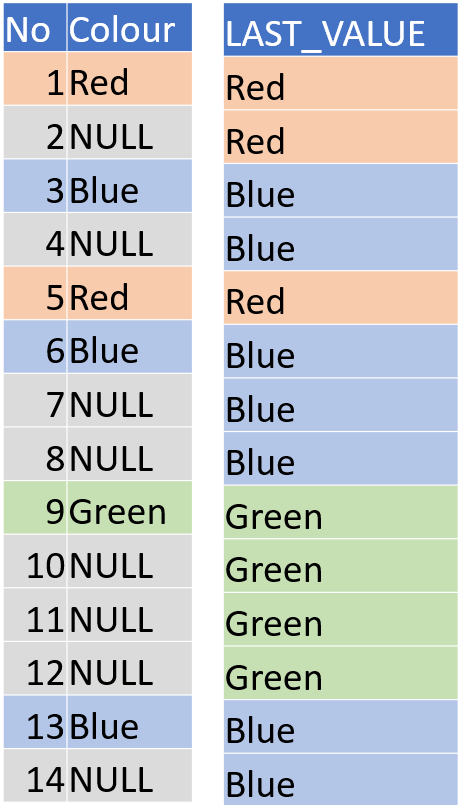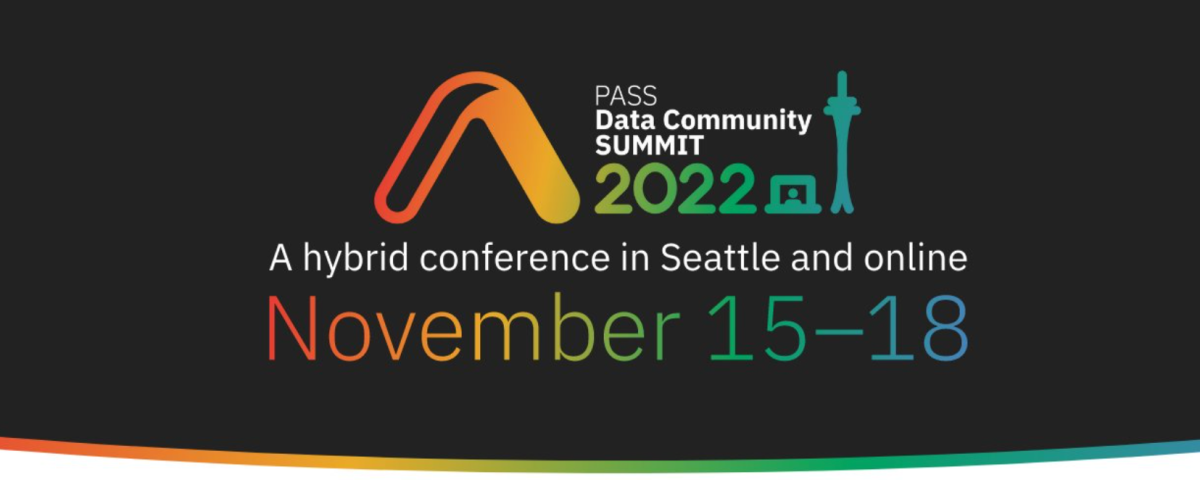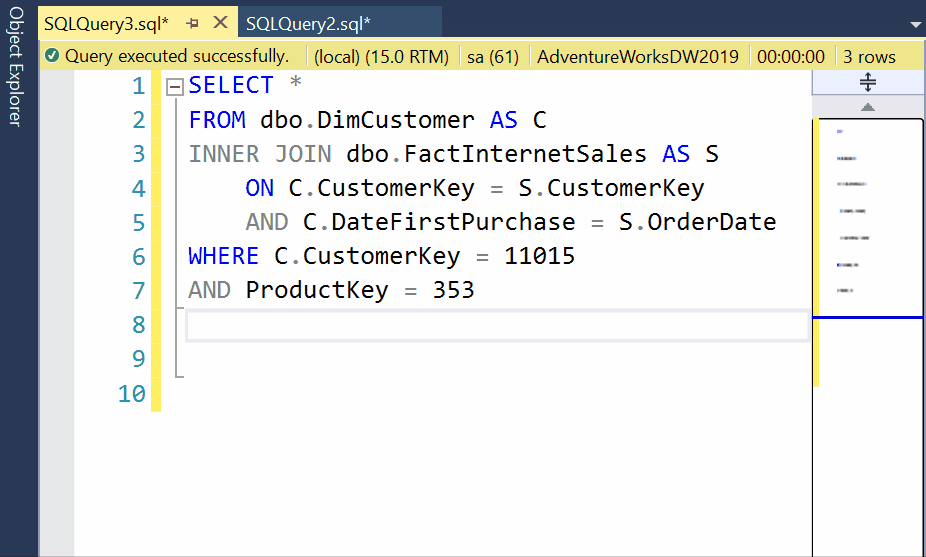Containers aren’t always for boring work stuff (although they’re great for that).
This post gives some details on how to set up Docker from scratch and create containers for both a SQL Server test lab and a Minecraft Bedrock Server.
For this month’s T-SQL Tuesday Anthony Nocentino (blog|twitter) asked us to share our experiences of using containers.
Not being a DBA type containers aren’t what you would consider my home ground. My work usually starts once an environment is in place and running but lacking my own personal DBA I’ve started to dabble with Docker on my personal laptop. Partly this is to make my life easier but also partly because I expect that sooner or later containerised development environments will be the norm and a bit of experimentation now will hopefully keep me ahead of the game.
To show the variety of things you can get up to with a container I’m going to share not one but two examples; Setting up a SQL Server container to support experimentation and testing code for blog posts and, on the other side of my work life balance setting up a Minecraft server to enable the family to play together.
None of this is my area of expertise and I’ve never had the Linux\Unix experience that would make this easy going but to some extent I see that as an advantage, there are some giants in the field who know far more than I ever will. I’m just going to show the rest of us how you can cling precariously on to their shoulders and get stuff done.
How To Run SQL Server In A Docker Container
Docker is now my preferred route to running SQL Server on a personal machine. It saves the need for a direct install (and potential of an attempted uninstall), it’s a smoother process than a full fat VM type setup with the need to install and configure a whole OS (I do miss the days when Microsoft provided a complete image with a 180 day time limit). It has a relatively light footprint and, gives you room to experiment easily with multiple versions. The only real downside is we’re looking at the Linux version of SQL Server so if you want to work with either SSAS or SSIS you might need to look to the alternatives.
My needs are relatively simple, a recent version of SQL Server, access to the most common sample data sets and to avoid having to rebuild and reinstall on a regular basis. The below gives me all that and it’s been everything I’ve needed while creating and testing my series of posts on querying XML with SQL Server.
I’m not going to retread ground here and as I hinted above this isn’t really my work so I’m going to share links and give as much credit as I can, if I’ve missed someone do let me know and I’ll get this updated. I’ve been through a few iterations of setting up these containers and this is the route that I’m happiest with to date.
Installing Docker
Go get Docker from their web site and install it if you’re running on Windows you will want to be using WSL2, if this is your very first time with Docker you’ll probably need to some details from Microsoft’s guidance on that. I installed the Ubuntu 18 Linux distribution as that appears to be the current preferred option for Docker.
Changing Default Local Storage Location
WSL2 by default puts all data into virtual drive files on your system (c:) drive. This may be a problem if you have a small boot drive and a big data drive like I do. I want to handle some big databases like the Stack Overflow data sets many like to use for query examples.
This answer over on Stack Overflow gives the step by step commands to move everything over to the location of your choice.
Setting Up a SQL Server Container
I’ve tried a few approaches for creating an SQL Server Container and the one that balances ease of creation with covering long term needs comes from the cupboard of Container King and all round nice guy Andrew Pruski (b|t). His guide to SQL Server and Containers gives you pretty much everything you need to get up and running quickly. I’d recommend putting the effort in to follow his more advanced Docker Compose example as it solves a few permissions issues you might encounter when taking simpler approaches and splits folders into neat volumes similar to those you’d see on a physical install.
My current setup is almost exactly the same as this only I’ve switched the container port to 1433 which is the default SSMS looks for. This saves me remembering the correct number when connecting. I also changed the password from Andrew’s default, it’s probably best we don’t all have the same password (make sure it’s complex enough, very sort simple passwords may be rejected and cause the process to fail).
If you’ve followed all of the above then by this point you’ll have an empty instance of SQL Server in a container. Connect up and give it a few test queries, if all you need is an empty server you can stop now.
Adding Some Data
Now we have our server we need to add some data. With WSL2 we have a route to access the drive volumes we’ve created from in windows but finding them can be tricky. The path I use with the above setup is:
\\wsl$\docker-desktop-data\version-pack-data\community\docker\volumes
You can then see sub folders for all the volumes you have created with Docker. You can then copy backups of your preferred data sets into the backup folder (I’m using varieties of Adventure Works and World Wide Importers) and restore as you would anywhere else.
Alternatively copy mdf, ndf and ldf files into the respective data and log folders and attach them (I did this for the Stack Overflow samples Brent Ozar maintains).
I had a few troubles with these, my first attempt with this approach left me with a read only database. This may have been because I copied the files directly from another container volume or it might be something that happens every time. I ended up having to adapt the command from Andrew’s setup that gives permissions to his SQL containers again against these file, detaching and re-attaching.
chown -R mssql:mssql /var/opt/sqlserver/[Whatever the file is that's causing the problems]
And we’re done, we have a shiny SQL Server 2019 instance in Docker, it starts when I need it, I can stop it when I don’t and if I need to upgrade I just re-build the container and all that sample data lives on in the volumes. Those visiting this page in a strictly professional capacity can stop reading now.
How to Run a Minecraft Bedrock Server In Docker
Many of you out there may, like me, find yourselves sharing a home with a miniature Minecraft Addict. I do and in between showing off her latest builds she’s begun pestering me to find a way to play with friends and family. I figured I could maybe save some work and re-use my newfound containerised powers for fun as well as profit and a few quick searches proved me right.
Here’s the container I’ve been using I don’t know who ‘itzg’ is but he’s a hero for setting this up. The server version used is a little out of date but it self updates and thanks to the use of a volume for data it remembers updates, configurations and maps so you don’t lose anything between sessions.
I found a few issues with the docker-compose.yml file so here’s my revised version with a few tweaks, extras and, a nice world seed that drops you in on the edge of a village for added in game friendship. If you didn’t get that SQL Server container up and running in the previous section then follow the steps on installation and setting the storage location before coming back here.
version: '3.8'
services:
Minecraft:
image: "itzg/minecraft-bedrock-server"
environment:
EULA: "TRUE"
GAMEMODE: survival
DIFFICULTY: normal
LEVEL_SEED: "-850418298"
ALLOW_CHEATS: "false"
SERVER_NAME: "My Server Name"
VIEW_DISTANCE: "64"
LEVEL_NAME: "My Survival World"
# WHITE_LIST: "true"
DEFAULT_PLAYER_PERMISSION_LEVEL: member
ports:
- 19132:19132/udp
volumes:
- bds:/data
stdin_open: true
tty: true
volumes:
bds: {}
That’s all you need for a local network game. If you want to play with others than you’ll need to work out how to forward port 19132 to the computer running the container and possibly figure out how to set up the whitelist file in the volume created so there’s no risks of unexpected strangers dropping in on you.
Have fun and look out for those creepers!















